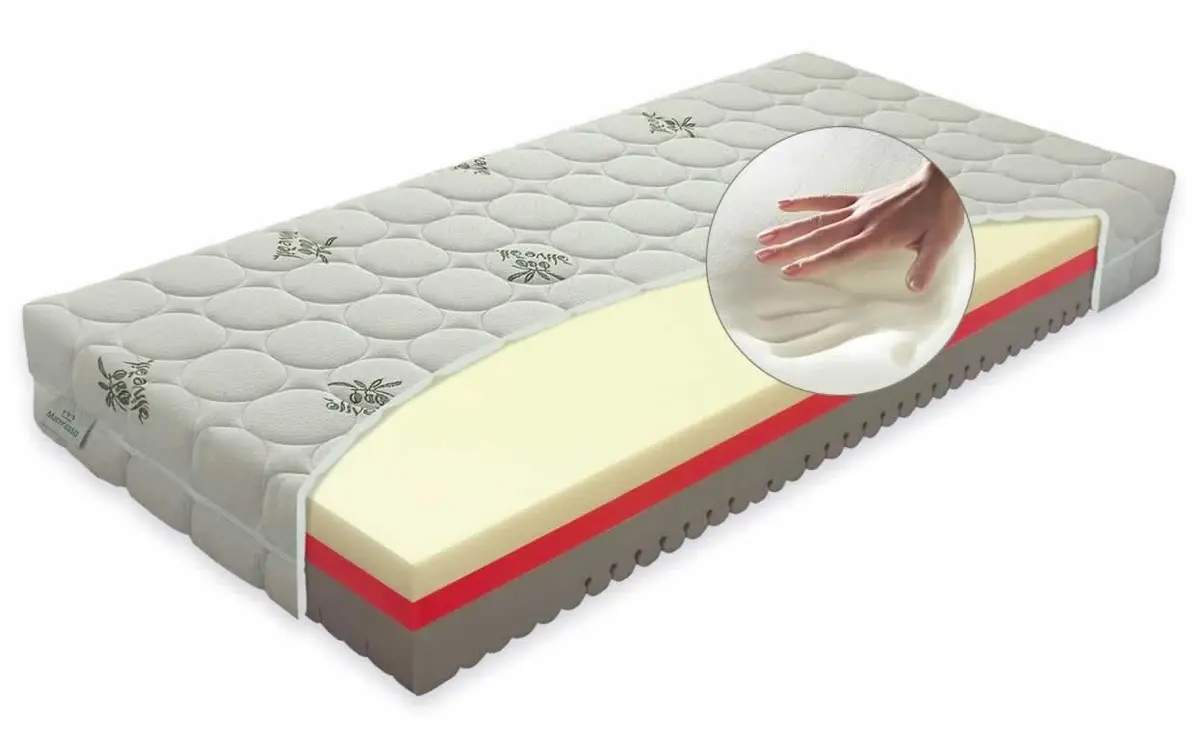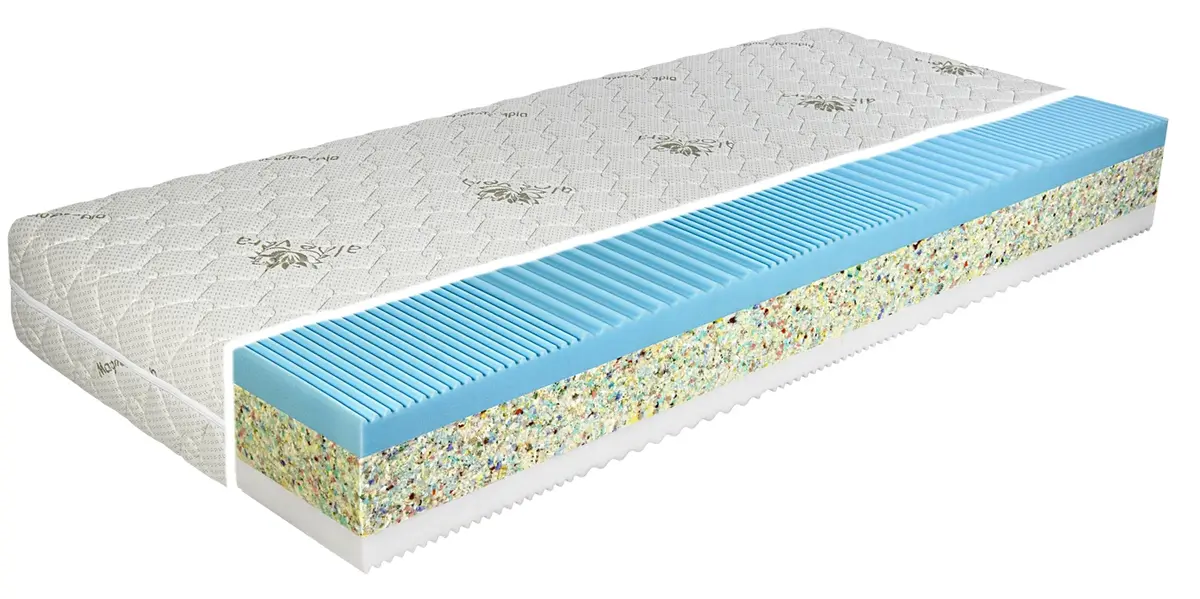Sandwich mattresses
Sandwich mattresses have become a popular choice in recent years for those seeking comfort, support and healthy sleep habits. The term “sandwich mattress” comes from the structure of these mattresses, which are composed of several layers of different materials, with each layer having a specific purpose. This structure allows for optimised comfort and support, thus adapting to the individual needs of different users.

The  trade mark POTEMA® defines the branded technological concept of the expertly qualified implementation company Carpet Service®, dedicated to the regular maintenance, cleaning, disinfection, impregnation of synthetic, natural, wool, silk and American mattresses, beds and textile materials. This branded concept delivers the utmost professionalism in full synergy with maintaining ethical, environmental and quality performance standards, including a contractual guarantee of contractor services.
trade mark POTEMA® defines the branded technological concept of the expertly qualified implementation company Carpet Service®, dedicated to the regular maintenance, cleaning, disinfection, impregnation of synthetic, natural, wool, silk and American mattresses, beds and textile materials. This branded concept delivers the utmost professionalism in full synergy with maintaining ethical, environmental and quality performance standards, including a contractual guarantee of contractor services.
Quality sleep is essential for physical and mental well-being, which is why it is important to invest in a suitable mattress. Sandwich mattresses provide the optimum combination of comfort, support and adaptability, which can contribute significantly to quality sleep. Thanks to their multi-layered construction, sandwich mattresses can support the correct spinal position, relieve the joints and minimise pressure on sensitive areas of the body. Choosing the right sandwich mattress can be critical to long-term health, as sleep quality directly affects daily energy, concentration and overall performance.
What are sandwich mattresses?
Sandwich mattresses are a type of mattress that consists of multiple layers. These layers can include foams, latex, coconut boards, springs, or memory foam. The goal is to combine different materials so that the mattress offers optimal comfort and support for the human body. The top layer is usually soft and comfortable, while the bottom layers provide support and stability. This multi-layered construction helps distribute the weight of the body evenly, which can be beneficial for proper spinal positioning during sleep.
Sandwich mattresses are often different from traditional single mattresses, such as foam or spring mattresses. Because of their construction, they have the ability to combine the positive qualities of each material while minimizing their deficiencies.
Main advantages of sandwich mattresses
Sandwich mattresses are distinguished by their construction and unique benefits that other mattress types do not provide. Here are some key benefits:
Adaptability
One of the biggest advantages of sandwich mattresses is their ability to adapt to the user’s needs. By combining a variety of materials, sandwich mattresses can be suitable for both heavier weight individuals and those who prefer a softer surface. Additionally, many manufacturers offer mattresses with different firmness for each side, allowing couples to choose the right side for their individual needs.
Better pressure distribution
The layered structure of a sandwich mattress helps distribute weight evenly across the mattress. This reduces pressure on the joints and spine, which can prevent back pain and improve sleep quality. Pressure on key areas of the body, such as the shoulders and hips, is reduced, which is especially ideal for people who have sensitive joints or back problems.
Improved breathability
Many sandwich mattresses contain layers with breathable materials such as coconut board or latex. These materials allow for better air circulation, which helps regulate body temperature during sleep. This makes sleeping more comfortable and enjoyable, especially during the warmer months.
Durability and durability
Sandwich mattresses are usually very durable because they contain firm base layers that provide support over a long period of time. With proper care, these mattresses can last up to 10 years or more, making them a long-term investment in healthy sleep.

Types of materials used in sandwich mattresses
One of the main characteristics of sandwich mattresses is the variety of materials that can be used. Each material has its own specific characteristics that affect comfort, support and the overall sleep experience.
Polyurethane foam
Polyurethane foam is one of the most common materials in sandwich mattresses because it is affordable and adaptable. The foam offers medium firmness and can distribute the weight of the body well. The downside can be lower breathability, but modern technology allows for the production of polyurethane foams with open pores that improve airflow.
Memory foam
Memory foam is a popular material for sandwich mattress toppers. This material responds to the body’s heat and pressure, conforming to its shape and providing a “hugging” sensation. Memory foam can help relieve pressure on the joints and spine, but on the other hand, it is less breathable, which can be a disadvantage in the warmer months.
Latex
Latex layers are popular for their hypoallergenic and breathable properties. Latex is durable and flexible, allowing the mattress to respond quickly to body movement without warping. This material is also antibacterial and dust mite resistant, making it an ideal choice for allergy sufferers. Natural latex tends to be more expensive, but is more durable and environmentally friendly.
Coconut board
Coconut board is a rigid layer that is often used to increase the firmness of a mattress. This material is eco-friendly, hypoallergenic and highly breathable. The coconut fibers help improve air circulation and keep the mattress cool and dry. The coconut layer is ideal for those who prefer a firmer sleeping surface.
Cold foam
Cold foam (HR foam) is made with a special technology that provides greater elasticity and breathability compared to regular polyurethane foam. This material is suitable for people who move frequently during the night, as the mattress reacts quickly to changes in body position. HR foam is also durable and long-lasting.

How to choose the ideal sandwich mattress
Choosing a sandwich mattress can be challenging, as there are many different types and variations on the market. Here are a few factors to consider when choosing the right mattress:
Firmness
The hardness of a mattress is one of the most important factors that affect sleep comfort. Sandwich mattresses can be soft, medium or firm, depending on the composition of the layers. In general, harder mattresses are suitable for people with a higher body weight, while softer mattresses are ideal for those who prefer a comfortable surface and are lighter in weight.
Mattress height
The height of a sandwich mattress can vary depending on the number of layers and their thickness. Higher mattresses tend to be more comfortable and offer better support, but can be more expensive. In general, the mattress should be high enough to ensure proper posture during sleep.
Depth
Breathability is a key factor, especially if you sleep in warmer temperatures or tend to sweat. Breathable materials such as latex or coconut board help to wick away heat and moisture, ensuring a comfortable and dry sleep.
Hypoallergenic properties
If you suffer from allergies, it is advisable to choose a mattress with hypoallergenic materials such as latex or coconut board. These materials prevent the proliferation of dust mites and other allergens, which can greatly improve the quality of sleep for those sensitive to dust and mold.
Durability
Each material has a different lifespan, which affects the durability of the entire mattress. Latex and cold foam are generally more durable than memory foam or polyurethane. Therefore, if you’re looking for a mattress to last a long time, it’s a good idea to invest in quality materials that will last a decade or more.

Cleaning and regular disinfection of mattresses
The mattress is one of the most important elements of our home, having a major impact on our health, well-being and quality of sleep. When choosing a mattress, we pay close attention to its material, hardness and ability to adapt to the shape of the body. Unfortunately, we often forget that we also need to care for and clean the mattress regularly. Although many people don’t realise it, a mattress can become an ideal environment for dust mites, bacteria, mould and other dirt. In this text, we’ll explain why regular mattress cleaning is important, what your options are, and how to choose the best mattress cleaner.
Mattress Vacuuming & Knocking: Professional vacuums with a HEPA filter and HEPA bag must have an electric vibrating knocking head. This technology of KIRBY® / HYLA® vacuum cleaners makes it possible to remove surface mold spores, dust mites by dry method from the mattress surface.
Cleaning with special chemical cleaners.
UV-C Lamp: We recommend entrusting your mattress to industry professionals who have a UV-C germicidal mattress lamp. UV lamps that produce UVC radiation are designed to be safely used on mattress surfaces and other household items. The radiant energy of the UVC radiation acts directly on microorganisms that reside on the surface and top layer of the mattress. The disinfection process usually takes several minutes, during which time the lamp kills up to 99.9% of the bacteria and other harmful organisms present.
OZON: we recommend entrusting your mattress to industry professionals who have the BIO-OZON® vacuum cleaning system. The disinfecting properties of ozone result from its ability to oxidize molecules in the cells of bacteria, viruses and other microorganisms. When ozone comes into contact with these pathogens, it disrupts the cell membrane or wall of the microorganism, leading to its decomposition and subsequent death. This process works similarly to the action of conventional disinfectants, but without the use of chemicals, which is beneficial for people who prefer natural and eco-friendly solutions.
In indoor applications such as mattress cleaning, ozone not only kills bacteria and viruses, but also mites, mold spores and other allergens. Its ability to destroy harmful microorganisms without toxic residues makes it ideal for the environment in which we sleep and rest.
Allergens, mold spores, bacteria, viruses and dust mites are not only a hygiene problem in mattresses, but also a health problem. But with proper prevention, maintenance and the right choice of mattress, the risks can be significantly reduced. Even the thickest sheets and blankets cannot protect us from micro-particles. Dust mites or moulds, which often number up to one million and produce allergy-causing faeces that settle in our mouths, noses, eyes, etc. every time we move. In addition to the allergy manifesting as itching, mucous membrane inflammation, bronchitis, asthma and shortness of breath can be added. This condition can be prevented by professional cleaning and deep dry disinfection thanks to UV-C radiation or vacuum ozonation of the mattress with thorough machine vacuuming and above all regular maintenance.